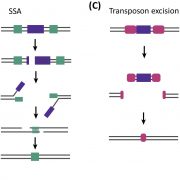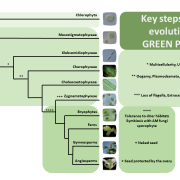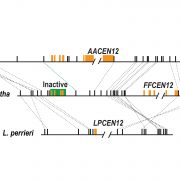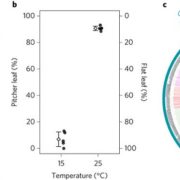Patterns of evolution: Dissecting the history of pattern recognition receptors from development to immunity
Plants use a suite of cell-surface receptors as signal transducers in both development and immunity. In this study, Ngou et al. utilized computational and functional approaches to examine the evolutionary origin of a subclass of plant cell-surface receptors called pattern recognition receptors (PRRs), as well as their known downstream signalling components. Using 350 genome sequences spanning red algae, green algae, and land plant lineages, they compared the two classes of surface-receptors: receptor-like kinases (RLKs) and receptor-like proteins (RLPs). The group found that RLPs emerged earlier than RLKs, and that the LRR-RLKs and LRR-RLPs showed notable expansions throughout different plant lineages – likely due to their involvement in pathogen detection. Focusing on the largest PRR family, the LRR-RLPs, the authors found a key conserved domain architecture: an island domain (ID) + 4 LRR motifs. Interestingly, they also noticed that the ID + 4 LRRs is also present in the LRR-RLK subgroup Xb, which includes several receptors involved in developmental processes. By performing several domain swapping experiments, they identified regions in the LRR-RLP and LRR-RLK-Xb families responsible for both immune and development pathway activation. The authors propose a persuasive model of “modular evolution,” where specific domains of cell-surface receptors evolve to recognize diverse ligands while other domains remain conserved to preserve distinct downstream signalling pathways. (Summary by Tamar Av-Shalom) Nat Commun. 10.1038/s41467-023-44408-3









